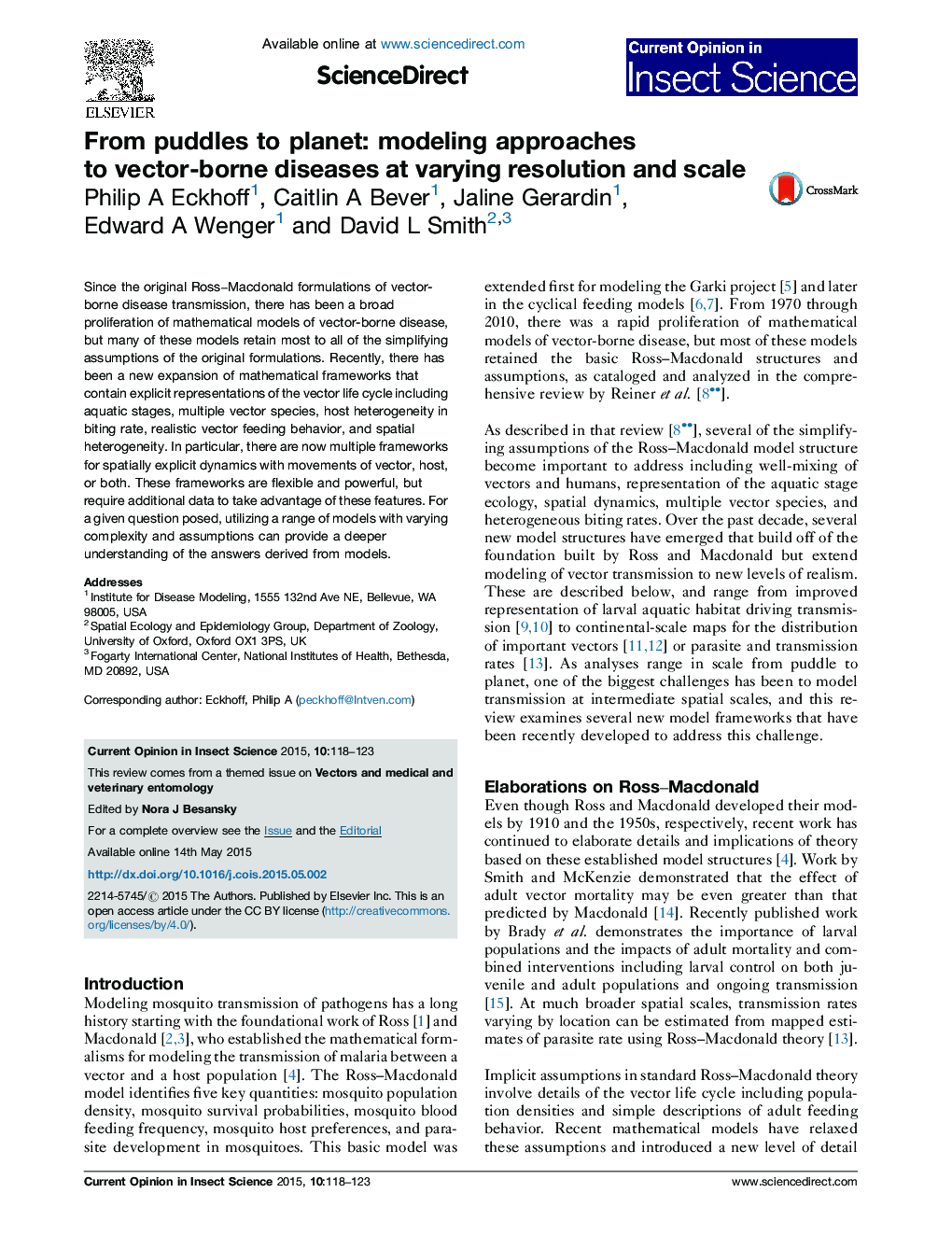| Article ID | Journal | Published Year | Pages | File Type |
|---|---|---|---|---|
| 6374091 | Current Opinion in Insect Science | 2015 | 6 Pages |
Abstract
Since the original Ross-Macdonald formulations of vector-borne disease transmission, there has been a broad proliferation of mathematical models of vector-borne disease, but many of these models retain most to all of the simplifying assumptions of the original formulations. Recently, there has been a new expansion of mathematical frameworks that contain explicit representations of the vector life cycle including aquatic stages, multiple vector species, host heterogeneity in biting rate, realistic vector feeding behavior, and spatial heterogeneity. In particular, there are now multiple frameworks for spatially explicit dynamics with movements of vector, host, or both. These frameworks are flexible and powerful, but require additional data to take advantage of these features. For a given question posed, utilizing a range of models with varying complexity and assumptions can provide a deeper understanding of the answers derived from models.
Related Topics
Life Sciences
Agricultural and Biological Sciences
Agronomy and Crop Science
Authors
Philip A Eckhoff, Caitlin A Bever, Jaline Gerardin, Edward A Wenger, David L Smith,
